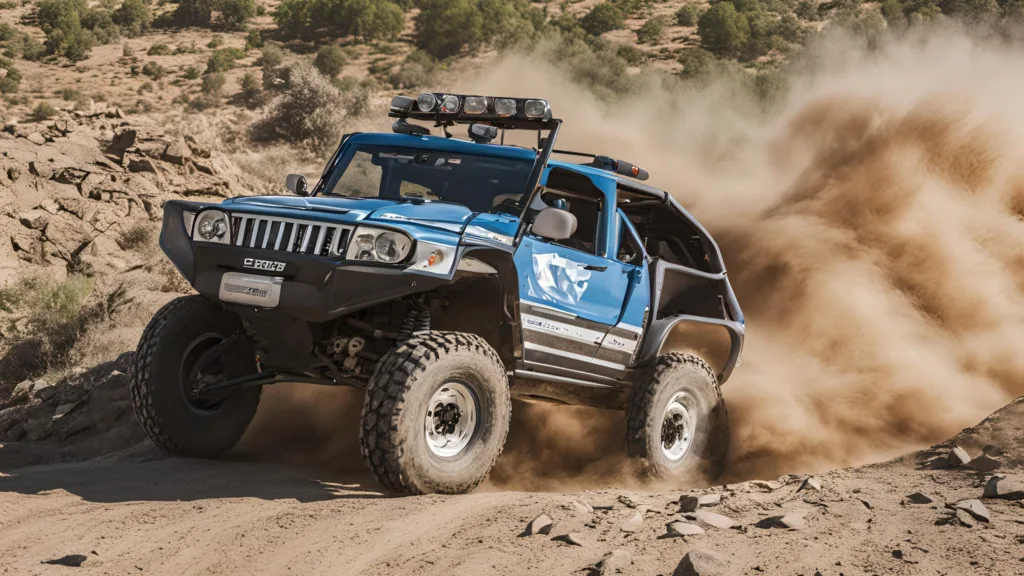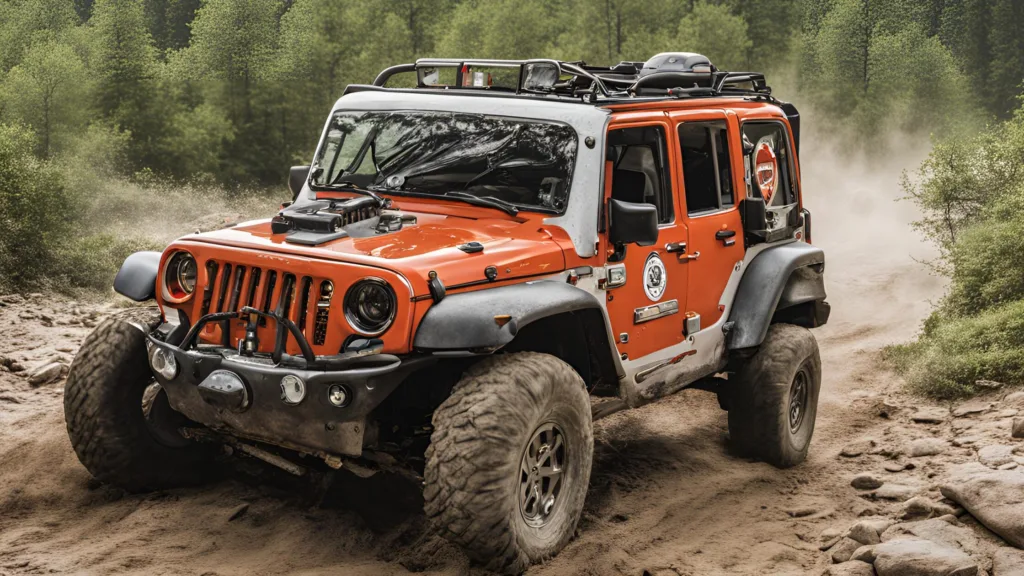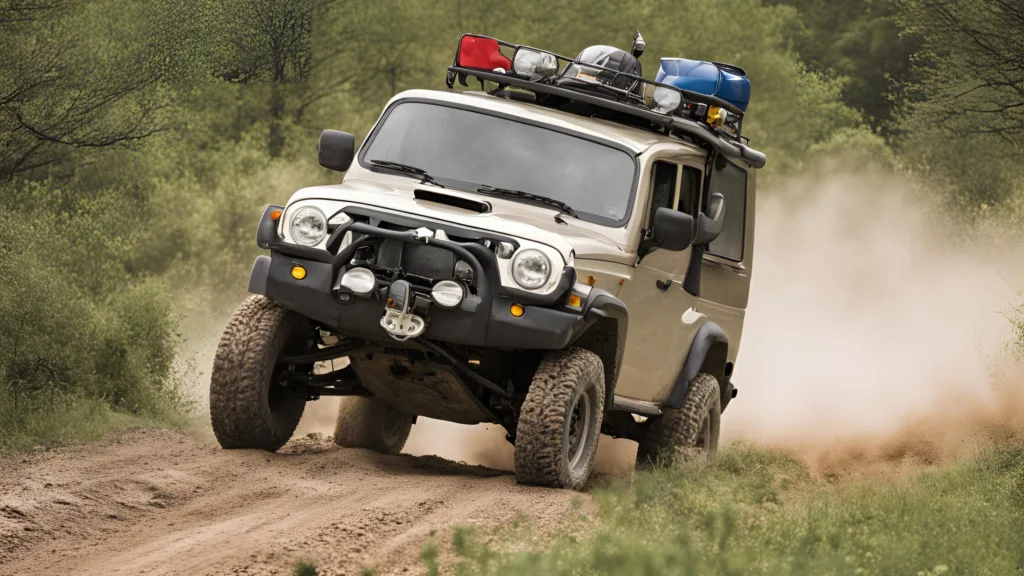Off-road vehicle safety hinges on proper training and appropriate gear. Riders must prioritize precautions and understand their vehicle’s limits.
Venturing off the beaten path in an off-road vehicle offers an exhilarating experience that attracts adventure seekers worldwide. Navigating through challenging terrains requires not just skill but also a commitment to safety protocols that protect both the rider and the environment.
It’s essential to arm oneself with knowledge of the vehicle’s capabilities, necessary safety equipment, and environmental considerations before embarking on any off-road adventure. Mastery of these elements ensures a thrilling yet secure experience as enthusiasts explore rugged landscapes. Safety training courses, adherence to trail guidelines, and use of personal protective gear are fundamental to preventing mishaps and ensuring a memorable off-roading excursion.
The Allure Of Off-roading
Adventure seekers and thrill enthusiasts find an undeniable charm in off-roading. This activity promises a journey through untouched landscapes and the excitement of conquering unpredictable terrain. Beyond the rush of adrenaline and the test of driving skills, off-roading also offers a unique way to connect with nature and escape the mundane. It’s a hobby that turns into a passion and, for many, a way of life.
The Rise In Off-road Recreation
Off-road recreation has seen a significant spike in popularity. Here’s why:
- Versatile vehicles available, catering to various terrains
- Social media and influencers showcasing scenic adventures
- Increase in off-road parks and trails
- Community events that encourage group explorations
The Thrill & Risks Involved
Off-roading thrills include:
- Testing limits of drivers and vehicles
- Experiencing diverse landscapes
- Technical challenges improving driving skills
But, it involves risks:
- Potential for vehicle damage
- Safety hazards for drivers and passengers
- Environmental impact considerations

Essential Off-road Safety Gear
Heading out on a rugged trail means preparing for the unexpected. Safety is not a choice; it’s a necessity. Equip yourself with the right gear before taking the off-road challenge. Stay safe and enjoy the thrill without the spills. Remember, safety gear is your off-road best friend.
Protective Clothing And Helmets
Protective clothing and helmets shield you from injuries. They are must-haves for every off-road adventure.
- Body armor: It guards your chest, back, and shoulders from impacts.
- Gloves: They keep your hands safe and improve grip.
- Boots: They protect your feet and provide ankle support.
- Helmet: A full-face helmet is ideal. It protects your head and face.
Communication Devices And Navigation Tools
In remote areas, staying connected is crucial. Communication devices help you call for help. Navigation tools prevent you from getting lost.
| Device/Tool | Use |
|---|---|
| Two-way radios | Keep group members in touch. |
| GPS devices | Show your location and route. |
| Smartphone with off-road apps | Offer maps and tracking features. |
| Satellite messengers | Send SOS signals when out of cell range. |
Vehicle Preparations For Rough Terrain
Tackling rough terrain in an off-road vehicle can be an exhilarating experience. Yet, without proper preparation, it can turn risky. Before you set out on your next off-road adventure, it’s critical to ensure your vehicle is up to the challenge. We’ll venture into the essential vehicle preparations that should be at the top of your checklist.
Regular Maintenance Checks
Ensuring your vehicle is in peak condition is key.
Regular maintenance checks are non-negotiable for off-road safety. Here’s what you need to inspect:
- Oil and Fluid Levels: Verify engine oil, coolant, brake fluid, and power steering fluid.
- Tires: Check for proper inflation, tread depth, and signs of wear or damage.
- Brakes: Ensure pads, rotors, and fluid are in top shape.
- Battery: Look for corrosion and secure connections.
- Lights: Test headlights, brake lights, and indicators.
- Suspension: Examine shocks and struts for wear.
Handle any issues promptly to avoid unexpected problems on the path.
Modifications And Upgrades For Off-roading
Modifying your vehicle can enhance your off-road experience.
| Modification | Benefits |
|---|---|
| Suspension Lift Kits | Improved ground clearance and better handling over obstacles |
| All-Terrain Tires | Increased traction on diverse surfaces |
| Skid Plates | Protection for undercarriage components |
| Winches | Self-recovery capability when stuck |
| Snorkels | Allows for deeper water fording |
| Protective Bars | Shields bodywork from impacts |
Choose upgrades that suit the terrain you plan to explore. Strong suspension and tires are must-haves. Choose quality parts tailored to off-roading for best performance.

Navigating Common Off-road Hazards
Off-roading is an adrenaline-pumping activity filled with its own set of challenges. Understanding and safely managing common off-road hazards is essential for any enthusiast. This includes knowing how to tackle difficult terrain features such as ruts, water crossings, and muddy paths. The right technique will not only keep you safe but also prevent damage to your vehicle.
Dealing With Ruts And Obstacles
Ruts and obstacles can cause significant damage if not navigated carefully. Here are some tips:
- Assess the depth: Walk the rut first if possible. Know how deep and stable it is.
- Slow and steady: Keep your speed low. High speed can lead to loss of control.
- Use low gear: This provides more torque and better control over your vehicle.
- Keep wheels straight: This helps navigate ruts without slipping into them.
Water Crossings And Mud Handling
Water and mud add an exciting but tricky dimension to off-roading. Follow these guidelines:
| Challenge | Tips |
|---|---|
| Water Crossings |
|
| Mud Patches |
|
By mastering these techniques, you’ll be better prepared to tackle the unpredictable terrain that comes with the thrill of off-roading. Safety is paramount, so gear up, stay alert, and enjoy the adventure responsibly.
Off-road Driving Techniques
Conquering the rough terrain with an off-road vehicle brings excitement unlike any other. Off-road driving demands a specific set of skills. Skilled drivers enjoy the adventure while staying safe. These techniques are essential for every off-road enthusiast.
Mastering Vehicle Control
Vehicle control is crucial on unpredictable terrains. Knowing your vehicle’s capabilities gives you an edge.
- Understand your vehicle’s 4WD system. Each type reacts differently in mud, sand, or rocks.
- Practice throttle control. Smooth acceleration keeps the vehicle steady.
- Know when to use low or high gear. Low gear offers power, high gear provides speed.
Controlling your vehicle also means using the steering to navigate obstacles. Keeping a consistent speed prevents losing control.
Terrain Assessment Skills
Assessing terrain is vital before driving. Recognizing risks ahead saves your vehicle from damage. Use these tips:
| Terrain Type | Assessment Tip |
|---|---|
| Mud | Look for solid ground. Avoid deep, unknown patches. |
| Sand | Check for firmness. Use wider tires for better flotation. |
| Rocks | Pick a path that avoids tilting. Use low gear for climbs. |
Knowing the terrain also involves weather conditions. Wet weather can turn a trail into a slide. Always prepare for changes.

Emergency Situations And Response
Off-roading is thrilling, but safety is crucial. A simple trip can turn into an emergency. Be ready to respond. Prompt, proper actions can save lives and vehicles. Learn key safety measures now.
First-aid Fundamentals
When injuries occur, first response is vital. Always carry a well-stocked first-aid kit. Know how to use it. Here are essential steps:
- Evaluate the scene for danger before helping.
- Call for help if injuries are serious.
- Apply pressure to stop bleeding wounds.
- Immobilize broken bones with splints.
- Keep the injured warm and comfortable.
Attend a first-aid course. Practice often. Your skills could save a companion.
Vehicle Recovery Procedures
Stuck or damaged vehicles need careful handling. Follow these procedures:
Using a table to represent recovery steps
| Step | Action |
|---|---|
| 1 | Assess the vehicle’s condition. |
| 2 | Choose the right recovery equipment. |
| 3 | Securely attach recovery straps. |
| 4 | Pull the vehicle out steadily. |
| 5 | Inspect for damage post-recovery. |
Practice recovery techniques. Use caution. Prioritize crew safety over vehicle condition.
The Importance Of Environmental Stewardship
Exploring the great outdoors with an off-road vehicle can be a thrilling adventure. Yet, as we venture into these natural spaces, we must remember one crucial role we all play: environmental stewards of the lands we enjoy. Keeping these areas pristine ensures that future adventurers can experience the same unspoiled beauty.
Minimizing Environmental Impact
Driving off-road doesn’t mean driving off-responsibility. Simple actions can make a big difference:
- Stick to trails to prevent damaging untouched ecosystems.
- Avoid sensitive areas, like wetlands and wildlife habitats.
- Maintain your vehicle to prevent leaks that can harm the environment.
Using eco-friendly accessories limits our footprint further. Biodegradable soaps, reusable containers, and solar chargers are prime examples.
Understanding And Respecting Trail Ethics
Trail ethics are vital for the safety of both the environment and riders. It’s about knowing and acknowledging:
| Trail Significance | Our Responsibility |
|---|---|
| Protected Habitats | Observe restrictions and enjoy without disturbing. |
| Shared Trails | Yield to hikers, bikers, and equestrians. |
| Trail Damage | Report it and avoid making it worse. |
Every rider should study local guidelines before hitting the trails. Awareness and respect for the rules protect the beauty and accessibility of off-road trails for everyone.
Frequently Asked Questions On Off-road Vehicle Safety
What Defines Off-road Vehicle Safety?
Off-road vehicle safety refers to the practices and equipment used to minimize risks during off-roading. It includes using proper gear, vehicles with safety features, and adhering to precautions.
How To Prepare For Safe Off-roading?
Ensure your vehicle is well-maintained and equipped for the terrain. Pack essential safety gear, including a first aid kit, and remain aware of weather and trail conditions before setting out.
What Are Essential Off-road Safety Tips?
Always wear a seatbelt, inform someone about your trip details, and never drive alone. Stay on designated trails, follow speed limits, and have an emergency plan in place.
Are Roll Cages Necessary For Off-roading?
Roll cages strengthen your vehicle’s structure, providing extra protection in case of rollovers. They are highly recommended for difficult terrains where the risk of accidents is greater.
Conclusion
Embarking on off-road adventures requires respect for safety protocols. Equip your vehicle properly and prioritize training. Remember, your well-being is paramount. Share these tips to help others navigate rough terrains safely. Let’s make every off-road journey memorable and secure for all enthusiasts.


